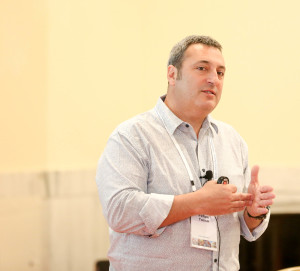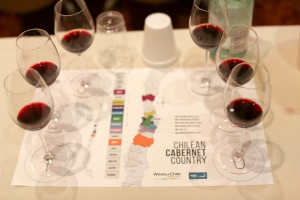At SWE’s 40th Annual Conference, held August 11-13, 2016 at the Mayflower Hotel in Washington DC, we were lucky to have some outstanding Chilean winemakers share their wines and their stories with us! Read on to learn about these two sessions, one which centered on the superstar–Chilean Cabernet Sauvignon, and another about the Syrah—Chile’s “Great Unknown”
Syrah: Chile’s Great Unknown – presented by Felipe Tosso: Syrah is a successful grape in many parts of the world. The largest Syrah-producing countries in the world are (in this order) France, Australia, Spain, Argentina, South Africa, the United States, Italy, and Chile. Chile may be number 8 in the list, but at 15,000 planted acres, Syrah might be considered Chile’s greatest “unknown” grape variety!
Within Chile, the largest plantings of Syrah are located in the Colchagua Valley, Maule Valley and Maipo Valley. The Colchagua Valley has over 6,600 acres planted to Syrah. The Mediterranean climate in the Colchagua Valley, along with the deep, rocky soil of the area tends to produce Syrah-based wines with deep flavors and mineral complexity. As representatives of this style of wine, the Viñedos Emiliana “Coyam” 2012 (a blend of 39% Syrah, 32% Carmenère, 17% Merlot, 9% Cabernet Sauvignon, 2% Mourvèdre, and 1% Malbec) was poured along with a Montes Alpha Syrah from 2013. Another interesting wine Colchagua Valley wine known as Ventisquero Pangea 2011 was offered. This unfiltered, richly hued wine is produced using 90% Syrah, 7% Cabernet Sauvignon, and 3% Viognier. Click here to download the slide show from the session: Syrah – Chile’s Great Unknown – presented by Felipe Tosso
Chilean Cabernet Country – presented by Patrick Valette: This session started out with a discussion of the areas in Chile that are best-known for Cabernet Sauvignon. These include the wine areas of Curico, Maipo Valley, Cachapoal Valley, Colchagua Valley, and Maule Valley.
Of the wines from the Maipo Valley, many are grown in the high-elevation Alto Maipo, a cool-climate area with a blend of colluvial and alluvial soils featuring clay, sand, loam, and gravel. Several wines from this area were sampled, including Viña Santa Rita Medalla Real Cabernet Sauvignon 2012, Viña Vetisquero Enclave Cabernet Sauvignon 2011, and Carmen Gold Reserve Cabernet Sauvignon 2009.
Located about 80 miles southwest of Santiago, the Colchagua Valley is another prime growing area for Cabernet Sauvignon. This area enjoys a nearly “picture perfect” Mediterranean climate, with alternating influences between the cool breezes off of the Pacific Ocean and the winds flowing down from the Andes Mountains. The Montes Alpha 2013 Cabernet Sauvignon, grown in vineyard areas known for their granite soils, was a highlight of this part of the tasting.
Another area known for Cabernet is the Cachapoal Valley. This area is planted over 80% to red grapes, with Cabernet Sauvignon and Carmenère being the superstars. A fascinating red blend, Viña VIK, grown in the Millahue subregion of the Cachapoal Valley, is produced form 55% Cabernet Sauvignon, 29% Carmenère, 7% Cabernet Franc, 5% Merlot and 4% Syrah was featured in this part of the session, and well-received by all! Click here to download the slide show from the session: Chilean Cabernet Country – presented by Patrick Valette
We will be posting additional conference recaps in the next few days. In addition, we are building our permanent archive of notes from the 2016 SWE Conference-click here! If you are a conference speaker who would like to share your materials, please contact Jane A. Nickles at jnickles@societyofwineeducators.org

